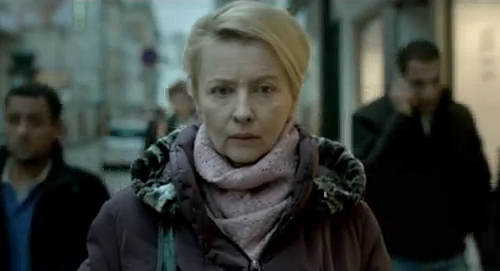It's about the La Ruche (‘the beehive', mesipuu), an artistic community that thrived in Montparnasse on the Bohemian left bank of the Seine, in the early 20th century. La Ruche was a three-storey circular building that looked like a large beehive: it was designed by Gustave Eiffel (the tower man) for use as a wine rotunda at the Great Exhibition of 1900 then re-erected by Alfred Boucher, a favourite sculptor of the rich and royal, in Montparnasse. Boucher was the son of a farmhand but he never forgot where he came from and, rather like the Estonian painter Johann Köler, who used his position as a popular painter to the Russian court in St Petersburg to promote Estonians, Boucher rented out La Ruche as studios where artists could share models and exhibit their work to the public. The rent was dirt cheap; and no one was evicted for non-payment.
Many Estonians wandered the world after the failure of the first Russian Revolution of 1905 and some of our most famous Francophile artists arrived in Paris. See oli La Belle Époque´i, ilusa aja Pariis, “särav, kumav, ääreta, piirita nagu hommikumaalase unenägu” (Eduard Vilde) – maailmanäituste järgne, esimese metroo, Suurtel Bulvaritel veerevate üüritõldade, luksuslike vitriinide ja restoranide, mondäänse seltskonna ja töölisametiühingutegelaste, verinoore Chevalier' ja Mistingette'i, Ladina-Ameerikast imporditud tangohulluse Pariis. Konrad Mägi, Nikolai Triik, Alexander Tassa, Jaan Koort and Friedebert Tuglas all lived at La Ruche during 1907 – 1915, sharing accommodation and food and mixing with stellar company such as Chagall, Picasso and Modigliani. Tuglas (and his alter ego Felix Ormusson) loved Paris despite material difficulties. Friedebert recalls in his memoirs, how he ate only three or four good meals all winter, living on coffee and bread and little else. When the Estonians ate out it was usually at the famous La Rotunde bistro where ‘Please Shut the Door'! in Estonian was fifth on the list of commands to leaving clients. Another famous eatery was a canteen run by the radical Cubist artist Mariya Vassiliéva (from Smolensk). Vassiliéva opened in 1915 and avoided a wartime government curfew with a license as a private club: nights there were filled with low-cost music and dancing. Later in the troubled 20th century, Paris was home and muse for master-engraver Eduard Wiiralt – he lived there 1925-1939 and from 1946 until his death – and it was here he created his absinthe-fuelled masterpiece picture ‘Hell,' an original, dynamic and thoroughly unsettling mixture of Realism, Expressionism, Art Deco and Surrealism brought to life as an animated cartoon by Rein Raamat in 1983.
Other ardent Estonian Francophiles included the socialists Johannes (‘Pierrot') Semper who lived in Paris 1926 and Johannes Vares-Barbarus, who, as far I can see, just dreamed about it. Those were the days when, after WWI and the War of Independence, Estonians were sick of war and Socialism (before it became a dirty word) was seen as a defender of peace. Kivikas, Under, Adson, Tuglas, Semper and Barbarus were all members of the expressionist group Tarapita (1920 –22) who were deeply influenced by the Parisian pacifist magazine Clarité, Light (motto: ‘War on war') founded by the communist Henri Barbusse. The high-minded Barbarus (an anagram of Barbusse?) refused the Vabaduse Rist for his services during the War of Independence. It is, in my opinion, a great pity that such a talented, original poet and humane doctor who served the people of Pärnu for decades should have the wool pulled over his eyes (puru silma ajama) by Stalin but he certainly wasn't the only one, either in Estonia or abroad. Many, including British literati H.G. (War of the Worlds) Wells (who interviewed Stalin in 1934) and George Bernard (Pygmalion/My fair lady) Shaw admired the inter-war USSR…
And, before I leave the bigger picture, I highly recommend Kabaree Marcelle with lyrics by Loone Ots and music by Andranik Kechek's performed by our premier chanteur de la chanson française, best singer of French song, Erkki Otsman). This cabaret show is a celebration of Eesti's esimene kabareetantsupaar René ja Marcelle (Bernhard ja Rosalie Leer) kes avasid (in the early 1920s) Tallinna Raekoja platsil kohviku Marcelle. If you can't afford a trip to Paris then Loone's cheeky (nipsakas?) words, Andranik's evocative music and Erkki's cool delivery is a great substitute. Look out for la vie Parisienne (life in Paris) in Tallinn and Tartu!
Hilary Bird




